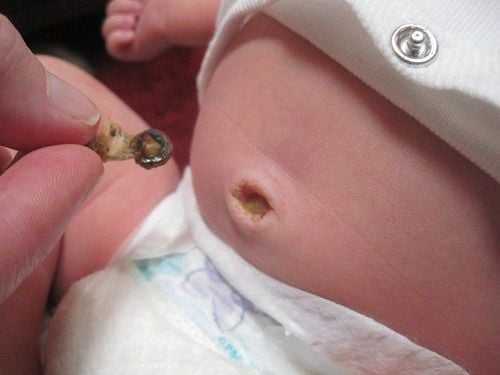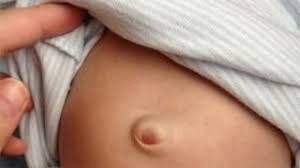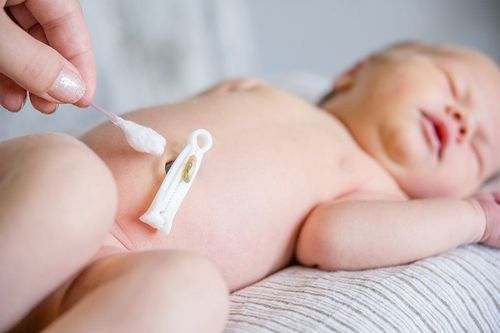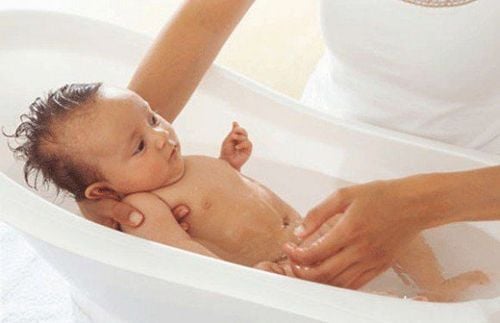This is an automatically translated article.
Posted by Doctor Dam Thi Quynh - Pediatric Center, Vinmec Times City International Hospital
The umbilical cord in a newborn is an annular concave scar that is formed when the umbilical cord falls off. There are many diseases related to the umbilical cord of the newborn. The following article will share some umbilical cord problems in babies as well as how to early detect, care for and promptly handle problems in newborn umbilical cords, avoiding unnecessary complications.
1. Learn about your baby's navel
When the baby is in the womb, the umbilical cord is the "way" to transfer nutrients between the mother's body and the baby. Immediately after birth, the doctor will clamp and cut the umbilical cord attached to the mother. The umbilical cord in a newborn is an annular concave scar that is formed when the umbilical cord falls off. It lies midway across the 2 iliac crests, with no subcutaneous fat. The structure consists of a dense layer of epidermis and connective tissue. This connective tissue is directly connected to the peritoneum. Just inside the intestines are the peritoneum and the small intestine. Below the navel there is an abundant network of arteries, veins and capillaries.
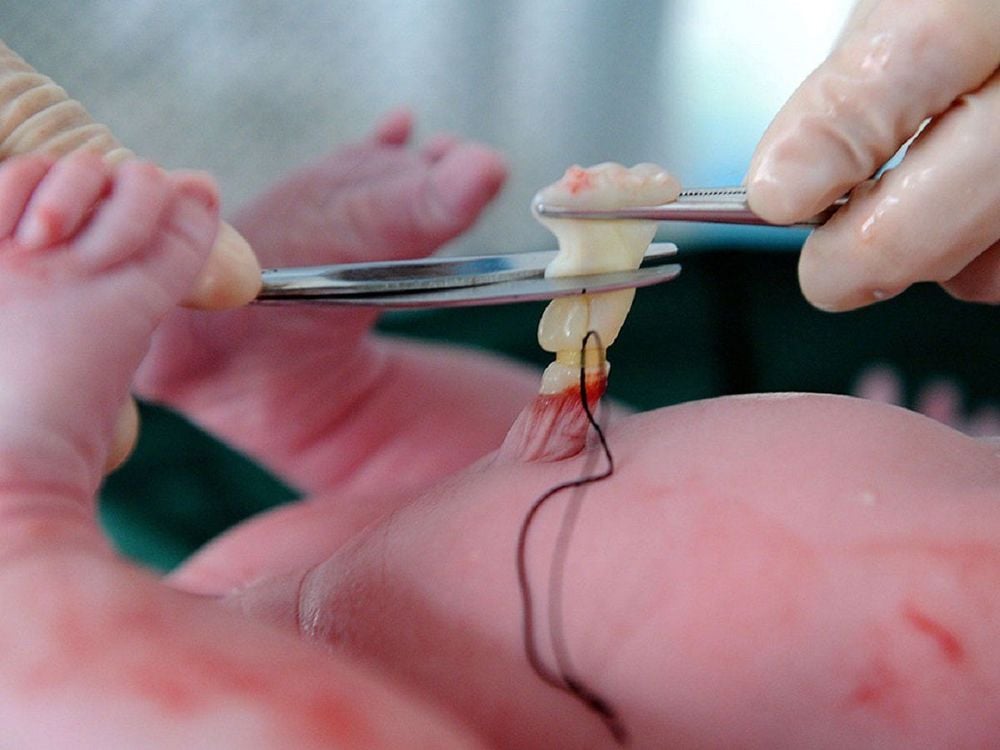
2. Why does the umbilical cord take a long time to fall off?
Most babies will lose the umbilical cord within the first 7-10 days after birth, except for some special cases such as babies with umbilical seed buds or slow-drying umbilical blood vessels. Delayed umbilical cord shedding usually after 3 weeks. Therefore, if after 10 days, parents see that the baby's navel has not fallen, do not be too worried. Parents need to clean and care for the umbilical cord daily for their children to closely monitor and detect abnormalities if any. Usually before shedding, the baby's umbilical cord foot may ooze a little wet, may be a little brown due to a little blood clot in the section of the umbilical cord, but absolutely no green or yellow pus, no smell. stinky and around the umbilical stump is not red and swollen, the baby does not have a fever and the feeding and sleeping activities are still normal. The mother needs to leave the navel open, not bandaged. Clean the navel daily, pay attention to clean the navel area and dry and open it. Umbilical hygiene affects the time of umbilical cord shedding (drying umbilical cord 4.2 days; rinsing with water 4.3 days; Chlohexidin 7 days; 70% alcohol 12-16 days). Should leave the navel open, fold the diaper below the navel to contact the air, the navel dries faster and falls off faster. Do not try to pull on the umbilical cord when the umbilical cord falls off slowly. If the umbilical cord is dry, the umbilical cord can be cut with a sterile knife/scissor.
3. Why does the baby's navel have a bad smell?
Newborns need a period of 7-10 days or so for the umbilical cord to dry and fall off. During this time when the navel has not fallen off, the navel is like a door that has not been closed, if the mother is not careful and properly cleaned, it will lead to infection, opening the way for bacteria to enter the body. And infection is also the main cause of the baby's umbilical cord odor. A foul-smelling newborn umbilical cord can be a sign of a few common problems such as:
Infection of the navel : The umbilicus falls off late, is wet and has a long-lasting odor. After a while, swelling and pus may develop. In some severe cases, the baby may experience swelling around the navel, abdominal distension and digestive disturbances. Umbilical necrosis: This condition may be present before or after an umbilical infection. The most common manifestation is the premature fall of the navel, followed by red swelling or bruising and discharge of pus, sometimes blood, with a foul odor. In this case, the mother needs to take the baby to see a doctor for early examination and treatment, because if prolonged, it can lead to blood infection, even death. Umbilical Inflammation: When you see a baby's navel with a bad smell, accompanied by symptoms of edema, yellow pus discharge and long shedding, this is most likely a manifestation of umbilical inflammation. Children with umbilical cord inflammation, in addition to the above symptoms, also have a low-grade fever and cry.

Umbilical Vasculitis: A foul-smelling newborn umbilical cord can also be caused by inflammation of the umbilical blood vessels. Umbilical blood vessels include 2 arteries and 1 vein, which is responsible for transporting nutrients while the baby is in the womb. When the baby is born, these blood vessels take time to fibrosis and disappear. If the navel is not cleaned properly, bacteria will be able to penetrate deep into the blood vessels and cause inflammation (umbilical artery inflammation and umbilical vein inflammation). If the child has the following symptoms: The child has a fever or a low temperature, the umbilicus or the skin around the navel is red, pus discharge, has a bad smell, the child has increased pain when touching the navel or around the belly button, the child refuses to breastfeed. , sleeping a lot... need to take the child to the medical facility right away.
4. Common diseases in the navel of babies
Umbilical hernia
Umbilical hernia is a defect in a part of the abdominal wall muscle, leading to a part of the bowel loop that will come out of that defect, creating a bulge. This bulge will get bigger when the baby cries or twists and will get smaller when the baby is still.
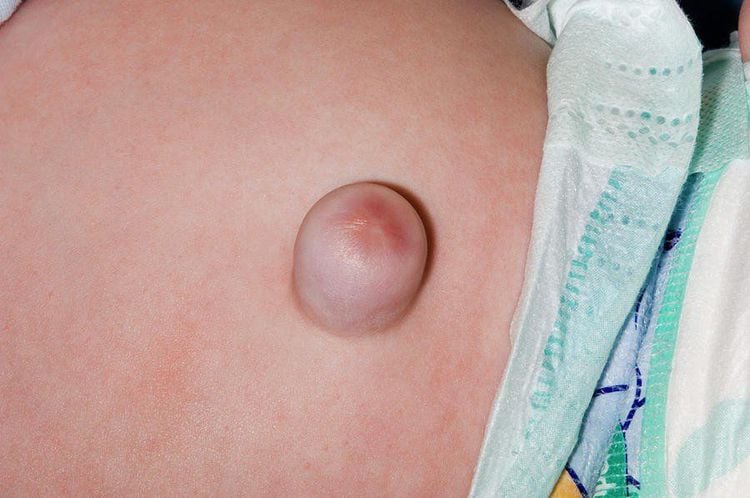
Surgery is performed when the umbilical hernia is strangulated (The segment of intestine located in the hernia is trapped and cannot be pushed into the abdomen, causing torsion, thrombosis) or the hernia mass does not decrease in size in the first 2 years.
Newborn umbilical cord bleeding
You will see a few drops of blood seeping between the dried umbilical cord and the base of the umbilical cord, which can be bright red or brick red (mostly brick red). Bleeding from rubbing diapers or diapers against the umbilical cord. The bleeding will usually stop or stop on its own after gently pressing the navel area with a clean gauze pad. However, if you see a lot of bleeding or bleeding (still bleeding after 10 minutes of compression or bleeding more than 3 times), you should take your baby to the doctor for early detection of diseases that cause umbilical bleeding. (umbilical cord infection, blood clotting disorder...)
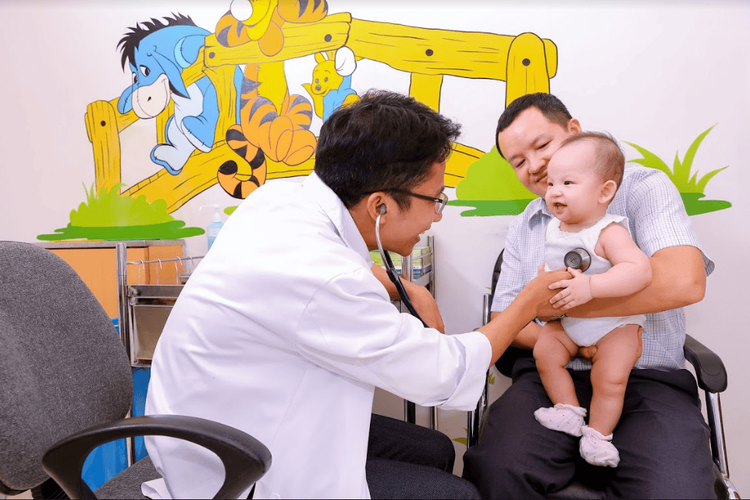
Above are some problems related to the belly button of babies. If you have any concerns regarding your baby's navel, please contact your doctor to get the most accurate answers to your concerns.
With many years of experience in examining and treating diseases in children, now the Pediatrics Department at Vinmec International General Hospital has become one of the major health care centers, capable of examining , screening and treatment of many specialized diseases in children. Therefore, if the child shows signs of poor absorption of nutrients, slow weight gain, growth retardation, etc., parents can take the child to Vinmec International General Hospital for examination and support. advice from qualified doctors.
Please dial HOTLINE for more information or register for an appointment HERE. Download MyVinmec app to make appointments faster and to manage your bookings easily.






